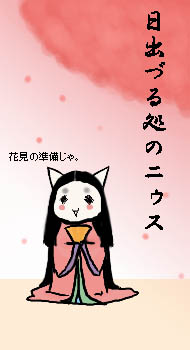Hatta was a Japanese civil engineer, born in Kanazawa on Feb. 21, 1886.
He received his schooling at Tokyo University. After his graduation in
1910, Hatta decided to seek a carrier in distant Taiwan, taking up a post
within the Civil Engineering Department under the Viceroy Office of the
Taiwan Prefecture. Hatta eagerly tackled his work, traveling vigorously
throughout Taiwan to appraise the land. Planning of the waterworks for
Taipei city became his first major assignment, to be followed by
an irrigation/drainage project in Taoyuan Xian. Implemented in 1916,
the project established Hatta's reputation as a capable civil engineer.
In anticipation of his expertise, Director-General Yamagata of the Civil
Engineering Department then assigned Hatta to lead an irrigation project
planned for Wusanto in Tainan Xian, a barren territory where even the
tough sugarcanes refused to grow.
The ambitious enterprise was a brainchild of the young civil engineer
himself, and was conceived with the objectives of water resource development
and flood control within the Chia-nan Plains -- a region previously troubled
by droughts, floods and salt injury. Launched in 1920, the project consisted
of the construction of the Wusanto dam, a lock and 16,000 kilometers of
waterway, the Chia-nan Irrigation River. Yoichi Hatta himself migrated
to Chia-nan to oversee the project. Heavy machinery including 50-ton cranes
and a German steam locomotive were mobilized in the construction of the
1,273 meter-long Wusanto Dam, the largest civil engineering project in
Asia at the time. The locomotive which labored in the construction is
proudly exhibited in a dam-side park.
Along with the most advanced machinery of the time, traditional methods
were also utilized including herds of water buffalos used to trample the
surface into a firm foundation. The project saw its completion in 1930,
boosting the agricultural productivity of the region by an enormous margin.
The waterways constructed channeled water to 150,000 hectares of farmland
within the Chia-nan Plains. The fertile spreads of farmland now seen within
Tainan Xian are the direct fruits of this undertaking. The total project
expense amounted to nearly one-half of an annual budget for the Taiwanese
Viceroyship.
On may 5, 1942, Yoichi Hatta boarded a ship bound for the Philippines
on assignment to evaluate the possibility of an irrigation project along
with a party of Japanese scientists, economists, and industrial experts
participating in the investigation of the newly occupied territory. The
vessel, Taiyo-Maru encountered an American submarine -- SS210 Grenadier,
and was sank off the Goto Islands on May 8th. Hatta was not among the
survivors of the incident. His corpse was later miraculously recovered
by a fisherboat operating off the coast of Yamaguchi.
Hatta's wife, Sotoyo received the tragic news in Wusanto, where she
found refuge until the end of the war. On September 1, 1945, the very
same day she reunited with her son who was evacuated in a different
location during the war, Sotoyo drowned herself in a discharge channel
which her husband toiled to build. The farewell note she left said, "I am
following my beloved". It was two days before Japan signed the instrument
of surrender and every single Japanese were soon to be dismissed from
Taiwan. A grave overlooking the dam was made for the couple, one year
after the death of the wife. It was set up by the beneficiaries of Hatta's
grand undertaking -- the farmers of the Chia-nan region. In 1978, a memorial
service was performed for Yoichi and Sotoyo, and a cenotaph was erected
in Honren-Ji temple in Nagasaki, Japan.
A statue commemorating the commitment of Yoichi Hatta was erected
adjacent to the dam on July 8, 1931. It was created with contributions
gathered from the workers that engaged in the construction of the Chia-nan
Irrigation River out of a sheer sense of respect for the young project
leader. It depicted him in a very peculiar posture -- sitting down,
fondling his hair with his right hand set on an uplifted knee. This
was the style the engineer always took when he was sunk in deep thought.
In the height of W.W.2, the statue mysteriously vanished when the State
attempted its confiscation as a measure to purvey depriving metal.
After the war, Kuomintang government took control of Taiwan. Showing
affinity toward Japan and the Japanese were forbidden, deemed to be
treasonous behavior. Buildings and monuments constructed under the
rule of the Japanese were toppled down.
After the harsh reign of Chiang Kaishek, the statue reappeared in 1981
to the astonishment of the general public. It was carefully hidden in
a warehouse within the region, and later within a lodging house of the
Chia-nan Irrigation Association by its members despite the danger of
material harm and even death. Ever since the restoration of the statue,
memorial services are hosted by the Association on 8th of May each year,
commemorating the anniversary of Yoichi's death. The achievements of the
civil engineer are not forgotten, passed down across the generations with
unchanging feelings of gratitude. In recent years, the ceremony has become
an opportunity for exchange among the Japanophiles of Taiwan, and the
Japanese feeling affinity towards Taiwan.
On May 8th 2001, "Hatta Memorial Museum" was opened beside the waterway,
introducing the vestiges of the Japanese civil engineer.
